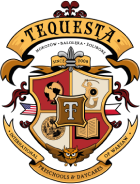A child’s first independently written word can be as thrilling as that first step. Yet before letters turn into recognisable shapes, a youngster must travel a long developmental road—one that builds fine-motor skills, the precise movements of hands and fingers. At TEQUESTA we see that, given time and the right support, “writing” grows naturally out of play rather than from academic pressure. So when should you encourage your Little One to form those first letters, and how can you do it wisely?
1. Fine-Motor Skills—What Are They?
Fine-motor skills cover the accurate movements of hands, fingers, and wrists. They allow us to tie shoelaces, fasten buttons, or draw a circle. Development is gradual: a baby grasps big objects with a whole hand; later a pincer grip (thumb–index finger) appears; finally the child controls a pencil in smooth strokes. Without strong “small muscles,” free writing and drawing are hard to achieve.
2. Signs of Readiness for Those First Letters
Children progress at different rates, yet certain abilities signal it’s time for eye-and-hand games:
- stacking a small tower of blocks and deliberately knocking it down,
- happily threading beads or dropping coins into a narrow piggy-bank slot,
- tracing their hand on paper and colouring specific areas,
- opening and closing a lunch-box clip on their own.
If most of these tasks are done with little frustration, you can introduce simple activities that prepare the hand for holding writing tools.
3. Home Activities That Boost Fine-Motor Skills
Educational toys help, but kitchen supplies or recyclables work just as well.
Sensory dough. Kneading bread dough or salt dough together strengthens inner hand muscles. Add a few drops of food colouring and the kitchen turns into an art studio.
Scooping and pouring. Moving rice, beans, or tinted water between containers with a teaspoon trains hand–eye coordination and grip control.
Scissors and paper ribbons. Cutting along wavy lines tones the very muscles that later stabilise a pencil.
Binder clips and paperclips. Pinching them onto cardboard practises precise pressure; sorting clips by colour adds a cognitive twist.
4. Worksheets or Free Scribbles?
Parents often ask whether a three- or four-year-old should already draw patterns in a workbook. Our answer: yes—if the pattern grows out of play, not obligation. Tracing zigzags with a wet stick in sand or drawing giant spirals on a shipping box provides the same input without the pressure of a neat result. Only at five or six does a child usually start enjoying “pretty” letters and consciously refining their shapes.
5. How We Do It at TEQUESTA
Each day we offer short motor stations. At one, children lay wooden mosaics; at another, they move pompoms with tweezers; on a sensory mat they walk barefoot over varied textures. We also add offline programming elements: laying tape tracks on the floor and moving figures along simple directional codes. These tasks build both fine-motor ability and sequential thinking—the foundation for reading and writing.
6. Pitfalls to Avoid
- Expecting perfection too early. A crooked “stick figure” is a stage, not a failure.
- Long desk sessions. The spine needs movement, and fingers need breaks; five-minute bursts beat half an hour without pause.
- Comparing to peers. Motor growth occurs in leaps—today’s child who skips crayons may surprise you tomorrow with a precise drawing.
The writing adventure starts long before a child grabs a pencil. It is fuelled by hundreds of tiny movements in daily life: zipping a jacket, squashing modelling clay, or pouring rice. At TEQUESTA we show that the power of small steps lies in variety and joyful discovery. When a Little One effortlessly threads a bead or cuts along a line, we know the foundation for fluent writing is set. Give your child space for free creation at home—let letters emerge from play, not haste. Then the first word written in their own hand will be more than an academic milestone; it will be a source of pride and a beaming smile.


